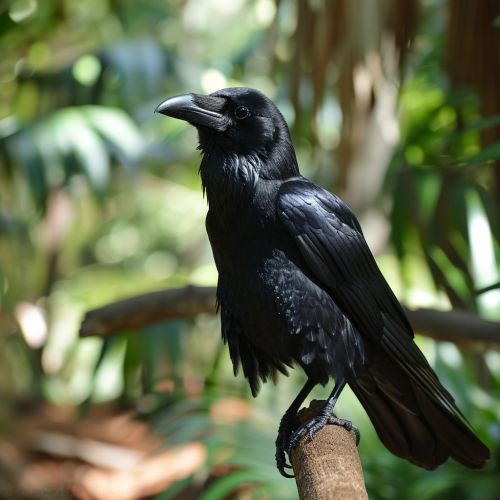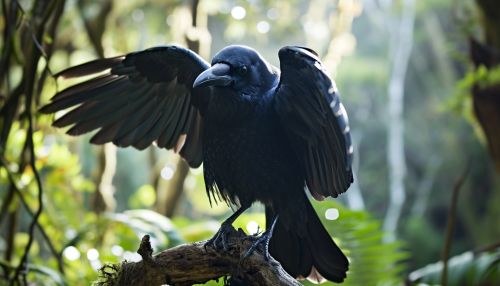Hawaiian crow
Taxonomy and Evolution
The Hawaiian crow or Alalā (Corvus hawaiiensis) is a species of bird in the crow family, Corvidae. It is about the size of the Carrion Crow but with more rounded wings and a much thicker bill. Despite its name, it is not only found in Hawaii but also in other parts of the world, including the continental United States and Canada.
The Hawaiian crow is believed to have evolved from the American crow (Corvus brachyrhynchos), which colonized the islands about 2 million years ago. Over time, the isolated populations of crows in Hawaii underwent adaptive radiation, evolving into a distinct species adapted to the unique environments of the islands.
Description and Behavior
The Hawaiian crow is a medium-sized crow, 18 to 20 inches in length, and weighing between 450 and 600 grams. It has a thick bill and large wings. The plumage is glossy and black with a bluish or purplish sheen. The feet, legs, and bill are also black.


The Hawaiian crow is an omnivore, feeding on a variety of foods. It has been observed using tools to extract food from hard to reach places, a behavior that is rare among birds but common in the crow family. The Hawaiian crow is also known for its loud and distinctive call, which is described as a two-toned caw.
Habitat and Distribution
The Hawaiian crow was once widespread on the Big Island of Hawaii. It inhabited dry and mesic forests at elevations of 300 to 2,500 meters. These forests were dominated by 'ōhi'a lehua (Metrosideros polymorpha) and koa (Acacia koa) trees.
However, the Hawaiian crow's range and population have significantly decreased due to habitat loss, disease, predation, and human persecution. Today, the species is considered extinct in the wild, with the remaining individuals living in captive breeding programs.
Conservation Status and Efforts
The Hawaiian crow is listed as Extinct in the Wild by the International Union for Conservation of Nature (IUCN). The last two known wild individuals disappeared in 2002. Since then, all known Hawaiian crows are in captive breeding programs run by the San Diego Zoo and the Hawaii Endangered Bird Conservation Program.
In an effort to reintroduce the species into the wild, captive-bred Hawaiian crows have been released into a protected area on the Big Island. These birds are closely monitored, and it is hoped that they will eventually form a self-sustaining population.
Cultural Significance
In Hawaiian culture, the Alalā is considered a family god or aumakua. It is also a symbol of royalty and is associated with the Hawaiian deity, Kū. The bird's feathers were used in traditional Hawaiian ceremonies and to adorn the ali'i (royalty).
